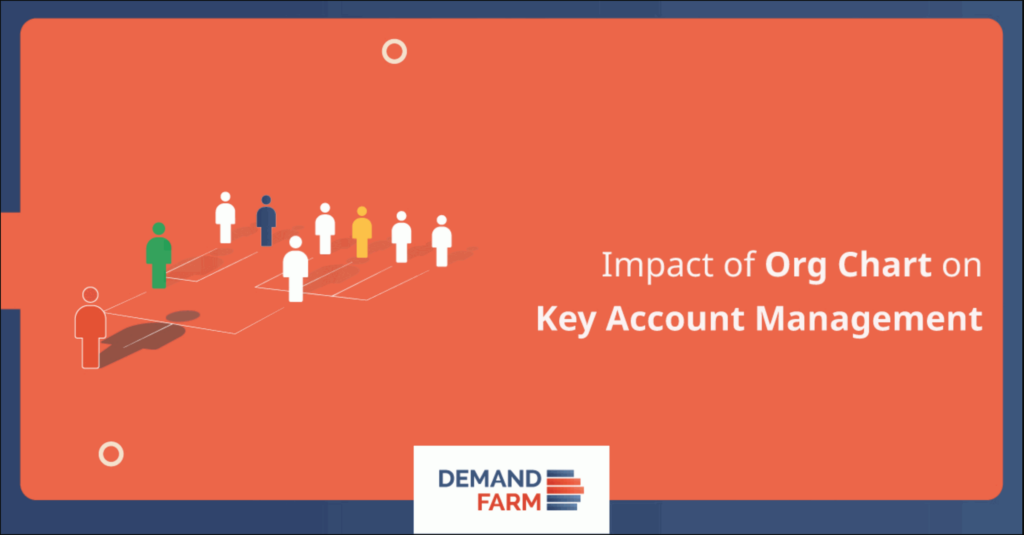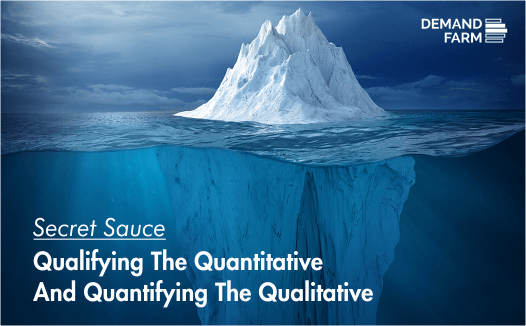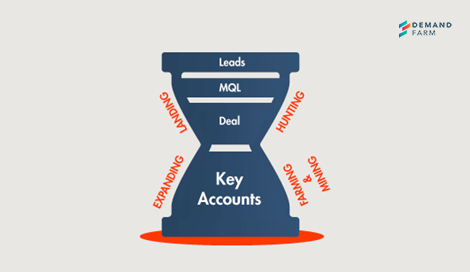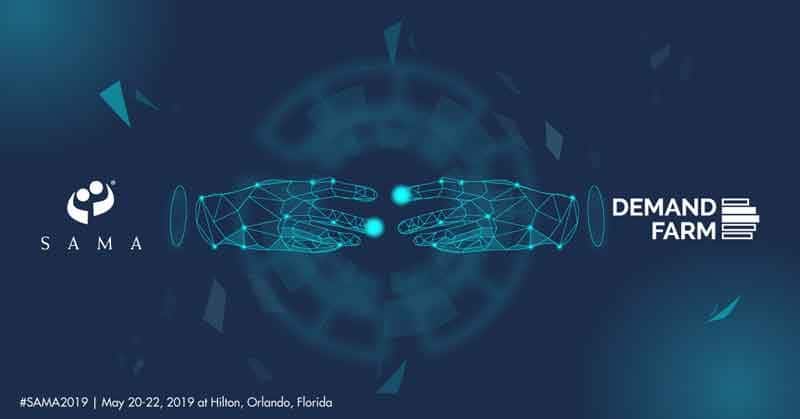The Key Account Management Secret No One Tells You About

Key Account Management is necessary for the organization’s growth. Let me share its secrets. An Old Friend Brings Up An Old Challenge A few months ago an old friend from business school reconnected with me and wanted to meet up for a chat. During the evening, I was happy to learn that he is doing well in his career – so well that he is looking after close to half of his company’s major clients – quite a feat. Once all the congratulating was over, though, I could hold back no longer and had to ask, “so, how do you ever sleep at night”? With all the complexity that each Client entails, managing one is tough enough. And here, my friend had several Key Accounts, albeit with an extremely competent team of Key Account Managers to work with him. But the fact remains it could not be a cakewalk. ‘Yep. It has been more than tough. For a while there I had given up sleeping at night! And in all those waking hours, I have been giving it much thought. So this is why I am here today. Sometimes you need to undo what works to get the formula to get better and sometimes you just got to maybe go back to the basics”.Me (antennae on high alert for some juicy insight about Strategic Account Management ) “Tell me all about it!” Casing The Conundrum “You know the drill with Key Accounts. Each Account Manager is the king of his castle. As long as it ain’t broke, you do not try and interfere as their Manager..you just look at the numbers and keep your thumb up. PEOPLE…(he paused meaningfully).. is the key to Key Account Success. It is all about relationships mapping – their relationships with clients and internal stakeholders – and Intel – in their head and their laptops, emails, wherever – you know the drill. Of late, my level of dependency on these people had been bothering me. You know, in spite of our best efforts to create a desirable work culture and environment, I have no guarantees on how long any of them will stay with us. If even one of them leaves, it would take me months to rebuild what may be lost – if at all I can rebuild it to the same level. This was what kept me up at night.There has to be a way to take Account Management from person dependent to process driven..but that would mean taking away the very essence of Key Account Management – which is that each Key Account Relationship is owned, grown and nurtured by a dedicated Manager who had the freedom and flexibility to meet all his Key Clients’ needs in the most customized, individualized way! Quite a conundrum!And what’s more, (he was really on a roll now, my friend!) my Key Account Managers are all highly experienced professionals…they have been doing what they do for a long time..and they are darn good at it…but it is difficult to get them to work in ways other than what they are used to…they see it as a disruption to their work and often it’s quite a challenge to get them to participate in anything like that. Recently we spent a bomb on a sales excellence methodology training and everyone said they really enjoyed it – but guess what..once they went back to daily life, it was business as usual – my Ops guys sifting through a million different files and presentations to make sense of what was going on with each Account, trying to stitch together the big picture for me, you know…how could we operationalize all that we developed in the methodology training in a coherent way across the board? You know, given that whole conundrum we just spoke of…how can we possibly……institutionalise the core KAM processes?” I finished for him.“Exactly. How can we? (pause) Should we?” That was then That conversation left us both with a lot more questions than answers but in the time since then; I took this challenge back to our team at DemandFarm. Anything that keeps KAM professionals up at night keeps us up at night, so we spent a lot of time working on the basic question – can- and should- we attempt to operationalize the core Key Account Management model to improve efficiencies, effectiveness, and governance in large B2B organizations? And if we did find a way to do that in our Key Account Management Software, would it be adopted by KAMs? Would it take away from their ability to customize and improvise the way they managed and grew their Key Accounts?We have spent several months tearing into this question and its implications. We have looked at it from many angles, many perspectives. The pros and cons of doing such a thing. And slowly, we did see the light at the end of the tunnel. It was time to set up a meeting with my old friend.
Impact of Org chart on Key account management

Are you a key account manager who brings a lion’s share of the revenue for your organization? or Are you a sales ops manager who backs the sales team to come up with flying colors? You guys are the real heroes of your organizations. Maybe that’s why the challenges faced by you are critical. Do you believe that a 19th-century management tool is solving almost all the challenges faced by you in this 21st century? It’s true and not a joke. “If no Org Chart, then no Key Account Management” Org Chart is the smart tool that does all the wonders. It is a visual representation of the structure of an organization with some extensive information about the contacts. It is dynamically evolving every day with new features added up to strengthen its potential. DemandFarm’s Org chart is one such powerful tool with lots of updates made to benefit modern key account managers About Demand Farm: DemandFarm is a Key Account Management Software system solely focused on addressing the unique challenges that Key Account professionals face. With focused functionality, the software allows all stakeholders of strategic, Key, and global account programs to intensively cultivate, build, harvest, and profitably grow the organization’s most valuable relationships. Power of DemandFarm’s Org Chart Software : Hierarchy Mapping: Know who reports to whom among the contacts. Relationship Mapping: Know who are the supporters, detractors, and neutral contacts. Influence Mapping: Know who influences whom inside the organizations. Power Mapping: Know the power of each contact i.e, who calls the shot. ‘From Contacts to relationships to key accounts’ 250+ leading companies in various industries are leveraging DemandFarm’s Org chart builder to re-imagine key account management and growing their strategic relationships with key accounts. One such company is Veracode. Veracode uses Salesforce Org chart About Veracode Veracode is an application security company that provides an automated cloud-based service for securing web, mobile, and third-party enterprise applications. Veracode offers multiple security analysis technologies on a single platform, including static analysis, dynamic analysis, mobile application behavioral analysis, and software composition analysis.
Annual Planning Pains

It’s that time of year again folks. Yes. Holiday time, Thanksgiving time, Fall time…but also account planning time! Holiday plans, travel plans…and of course, Annual Key Account Plans! You know that adage- if you fail to prepare, prepare to fail! I had that in big bold letters up in my schoolroom back in high school. While it’s 100% true, it doesn’t change the fact that planning time is a big pain. KAM in simpler days and times Before I turned entrepreneur, I was a Key Account Manager with a large automotive giant. And this time of the year, usually meant taking stock of a lot of data from around the company- all on paper in those days- and trying to pore over all the numbers from all the sources and making sense of them, mobilizing my sources to see what the Client was planning for their year to come, strategizing with the leadership to develop my path for the year and of course, bracing myself for the internal sell, in case some major initiatives were needed to remain competitive. The more things change, the more they remain the same. Today, the very definition of key Accounts has gone from large companies to ultra-global matrix organizations, connected digitally across a complex network of relationships, tracking people’s movements across the globe, mountains of data across myriad formats- from PowerPoints to emails to the cloud…everywhere! In real-time…how simple my Key Accounts of yours seem in comparison…with easier lines of command, few verticals, and even fewer geographies. Shaking off the nagging doubt that ‘somethings been missed’… My compatriots in contemporary Strategic Account Management tell me that the sheer complexity of large Accounts today is not the real challenge- the challenge is managing all the data that is generated, and interpreting that to create strategic action points or annual plans. It’s simply not feasible for one individual to manage it manually – even with the help of software and a laptop. It’s amazing how many productive hours are wasted- yes, wasted– in simply collating the data required to start the process of annual planning – so many formats, so many sources. And even then, one can’t be sure if an opportunity to expand or grow has simply been missed or fallen through the gaps because one entity or buying unit or geography or vertical of the Key Account was missed out, or a certain connection wasn’t established with the right person at the right time in the client organization, or a new business vertical was recorded as an independent entity in the CRM system and didn’t show up in the Account data at all… Over to #painfreeplanning So obviously, technology can help track and collate everything better, and overall plan better, and there are lots of tools to make that happen…but the real secret sauce to shift the focus from managing to growing is to spend productive hours on data interpretation and strategic action, not on joining the dots and collating data from various sources, figuring out version control of the many PPTs floating around or cutting and pasting financial data from excel sheets. At DemandFarm, our inspiration is to create #painfreeplanning for KAMs everywhere. Our technology joins the dots and collates all the data in one format, in one place, right inside your CRM. You won’t believe how pain-free it can be till you try it yourself. And, all this month, we are giving you that opportunity. Experience the DemandFarm Salesforce Account Planning module – free for two months; no questions asked – and see if it works for you. More than a thousand Account Managers across verticals have already made the switch…it’s time you experience why. Happy Thanksgiving, Fall, and the upcoming festive season. Most of all, happy #painfreeplanning!
What Kind of Icebergs are your Key Accounts?

B2B Key Accounts are typically large global enterprises, with interest across verticals, several lines of business, complex organizational structures, plenty of staff movement across geographies and entities and significant regulatory dynamics. So it’s obvious that the solutions offered to such Clients are equally complex, high value and typically medium to long run. While that kaleidoscopic level of complexity is mind-boggling in terms of management, it is also an indicator of the endless possibilities to build deeper and wider engagement with the Client…across verticals, across geographies, across buying units. If a Client has made the cut to be listed as a Key Account and be managed by the elite Key Account Management Squad, then it’s assumed that they are either high performance- high potential Accounts or High- Potential- Low (current) value Accounts (that need developing).In this post, I’m focusing on the ‘High Potential’ piece of the equation. How do we unlock all that potential in our favor? The visible potential and the invisible potential – i.e., both parts of the iceberg. If we lose a Key Account like that, it can unbalance the entire ship, even possibly sinking us. However, if we find a sustainable way to harness the potential it offers, of what lies above and beneath, then we are well on our way to winning with KAM. Unlocking the true business potential of a Key Account involves being a good hunter (spotting available opportunities for revenue – the visible part of the iceberg) and a good farmer (nurturing white space opportunities for growth and value creation, till they are ripe for harvest- what lies beneath). At DemandFarm, we call the latter Account Farming. Ok- with that said, the question is- how? What areas of Key Account Management play the biggest role in unlocking the business potential of Key Accounts? Here are some that come to my mind..I’d love to hear from you on others: Relationship Management Now, this is my number 1 pick for factors impacting Account Farming. I’m referring specifically to people: who are the people that matter in this Account and how can our relationship mapping with them be leveraged for growth? Large B2B companies have matrix structures with complex, often complicated relationship networks. People move around hierarchically, geographically, across verticals and buying units, and sometimes even functionally. So what are the key focus areas? First, is knowing the right people in key roles, their formal and informal affiliations, a predisposition towards significant issues, hierarchy, etc. Second, it’s about connections – connecting the right stakeholders at the Client end and internally, leveraging the right relationships at the right time, for the right opportunity Third, it’s about investing in building and nurturing the right relationships at all levels- gatekeepers, influencers, and decision-makers included – for the mid to long term Finally, it’s about capturing all of that into a format available to all internal stakeholders. Leaving it in the Account Manager’s head makes you vulnerable, but it’s virtually impossible to keep tabs on all of this in real-time, without a technology enabler Data Management This is a close second to Relationships. Winning with Key Accounts is all about client-centric intelligence and insights. So it’s important to address where the data comes from, what needs to be mined and how it needs to be managed. But the secret sauce is qualifying the quantitative and quantifying the qualitative. Remember that old saying – not everything that can be measured counts, and not everything that counts can be measured. In my eyes, knowing what to quantify and what to qualify is the secret to spotting business potential. It’s about having your eyes on the right metrics and building the right models to act on critical qualitative indicators. The right technology can make this process smoother. Even more important is enabling KAMs to leverage insights without spending inordinate time steeped in data. This involves: Leveraging data already available in other systems such as CRM to generate real insights – at DemandFarm we call it the Data consumption vs. data Creation approach. The former minimizes pressure on the KAM to be filling in forms and capturing data. Real-time data available in one format at one place with one click: shockingly, even today, much time that should be spent building relationships and doing strategic work is spent in housekeeping tasks like collating and formatting data from various sources, generating reports manually, etc. Account Planning How customer-centric we are is revealed in our Key Account Planning. And how customer-centric we determine how well we can unlock business potential. There is no way to widen and deepen engagements with Key Accounts if we don’t plan with an eye on the entire landscape and white space – including everything about Client plans, pains, and opportunities, competitors, regulatory constraints, etc. Opportunities for growth and value creation are uncovered if we know what the Client aspires to, and how they plan to get there. The process of Account Planning needs to go beyond the process of annual planning. Internal Collaboration Strategic Account Management is a team sport – everyone needs to be on the same page to harness potential effectively. Lots of wheels need to be set in motion to capitalize on medium to long-term value creation opportunities. How well we are able to manage data to spot opportunities; building an internal business case to go after the right growth areas; setting clear expectations and buy-in from internal stakeholders; spending time on collaboration rather than clarifications and explanations, institutionalizing core key account management processes to avoid surprises and improve accountability – are all crucial indicators of a collaborative team. The right platform can make the process of collaboration seamless. Got some more you’d like to share? Write into us at [email protected]
B2B Sales is a Funnel. No, Its an Hourglass aka a Damru!

Aren’t we all familiar with the Sales Funnel? It has defined the shape (literally) of marketing and sales, over the years. But I argue that for B2B companies, it is not a sales funnel, but an HourGlass or a damru. (Wikipedia says Damru is a small two-headed drum, used in Hinduism and an instrument used by Lord Shiva) Traditional B2B Sales Funnel What happens in a conventional sales funnel? Marketing generates thousands of leads and passes on the qualified leads to the sales team, who in turn win the deals. So far so good. But some B2B companies offer many solutions and long-term engagements with their customers. For these companies winning the first deal is just the beginning. It is consciously followed by identification of Key Accounts that are then, Farmed and Mined for more revenues i.e. LAND and EXPAND. Enter the Hourglass I was looking for a visual aid that could give me a good representation of this reality. The Traditional B2B sales funnel never gave me a good representation of this process. Thus, I extended the funnel by adding an inverted funnel at its bottom, shaping it as an ‘Hourglass.’ Images are a powerful means to drive home a point- in this case, Key Account Management as a critical component of revenue generation for B2B companies. Please refer to the diagram below. For most B2B companies, the bottom half of the ‘Hourglass’ generates 80%+ of the revenue in a given year. The most commonly used nomenclature is ‘Hunting’ & ‘Farming’. Hunting is to acquire new customers while Farming is to grow the business from existing customers. I have noticed that in recent years, companies have recognized that Hunting & Farming teams need to operate separately. Because inherently, hunting and farming skills are quite different. A good hunter is a flamboyant sales guy who connects with many people and ensures entry into an account. Whereas, a Farmer is a more intellectual and consultative type. He has a great knowledge of both customer business processes and how the solution fits into the concerned business’s reality. So a good hunter is invariably not so good at farming. The reverse is also true – a good farmer is uncomfortable in hunting. In a nutshell, a Hunter sells, while a Farmer helps a customer buy. Filling the Hourglass The hourglass concept can be further extended to include not just all the marketing and sales functions, but also tools and technologies that are impacting these functions. The ‘Hourglass’ also helps in organizing various functions in a B2B company. As you can see in the above diagram it is easy to define various roles of Marketing, Inside Sales, Sales and, Account Management in the revenue lifecycle. If I extend this further to sales and marketing technologies, we get the above. So, above the narrow neck, we have technologies and tools in Marketing automation, Inside Sales, Lead qualification and, Sales Process Automation. Key Account Management Software settles down below the neck. What is your view of ‘Hourglass’ as the right way of looking at the revenue pipeline for B2B companies? I look forward to your views.
Sales Enablement Tools for Key Accounts

Sales enablement as a concept is still evolving. Typically, sales enablement tools ‘enable’ sales teams with the right intel and content at the right time to make the right selling decisions to their most important prospects and customers. Sales enablement tools are powered by technology and allow scaling up of the processes that help move white space opportunities forward. However, when it comes to B2Bs that earn up to 80% of their revenues from a few (say 20%) Key Accounts, the whole ball game demands a different level of engagement and enablement. Undoubtedly, it is easier to grow the business from existing customers than to win new ones. This is all the more true in the case of large B2Bs selling high value, high engagement solutions, which are hard – and expensive – to win. Such B2B Key Accounts are typically complex, global entities. They have multiple buying units spread across varied lines of business, verticals, geographies and even functions. With the right enablement tools, the potential to farm and mine these Accounts for optimal revenues is virtually unlimited. Each key Account is owned by a Key Account Manager (KAM) who is responsible for managing the relationship and growing revenues from the Key Account. Without enabling technology, managing Key Account complexities and growing revenues would be unfeasible. Hence for good Strategic Account Management, you need a great Key Account Management tool. However, the nature of technology enablement required goes far beyond what sales enablement solutions offer. B2Bs need KAM Enablement tools, a subset of sales enablement tools specially designed keeping the complexities of Account Management in mind. KAM Enablement tools like a Key Account Management Software typically combine the ability to ‘manage the repetitive tasks at an operational level, the data & analytical complexities at an organizational level, and the flexibility KAMs need to build the relationships at a strategic level’. DemandFarm seamlessly enables all three so that KAM can most effectively and efficiently handle both- the scale and complexity of Global Key Accounts. This helps the key accounts grow while making the life of a key account manager easier. Learn more about how KAM Enablement will help you grow your business: Read the blog here.
Sales Enablement, Tops the C Suite’s List of Must-Dos.

As per a recent Forbes Insights New Report with Brainshark, “The Power of Enablement: Bridging the Sales Productivity Gap,” that studied 200 plus US base executives, what topped the charts of priority for the C-level executives, was ‘How to improve sales productivity’ and how ‘Sales Enablement’ was important to productivity. They believe that sales productivity is critical to future growth and are willing to put their money where their belief is, as it has obviously been paying them rich dividends. Sales enablement solutions, as we see, are the top technology solutions they plan to invest in. Scaling up in numbers and the quality of selling across the chain becomes important as organizations grow. As the sales in organization grow, it is not just enough to focus on each sales representative, each account, and even each Key Account manually or through traditional methods and tools. Sales enablement in this situation plays a critical role. As Brainshark CEO, Joe Gustafson says, “You have to tackle sales productivity from two angles: improving efficiency and improving effectiveness.” This happens with Sales Enablement. It’s helpful to go through what this Report reveals. It reveals certain interesting findings of Sales Enablement and top-performing organizations. CEOs look at Sales Enablement Technologies to leverage their content. The two things important to CEOs are Sales Content Analytics and giving the sales representatives easy and instant access to content in the field. With Sales Enablement, organizations can make sure that their sales team always has information and resources at their fingertips. It is like a Content ATM- but accessible across devices. Integration with the organization’s CRM further improves content disbursal at the right time to the right people and in every selling situation. Moreover, it provides the right training for every such situation as well. With Content Analytics, you can measure the impact of content through revenue analysis, white space opportunity analysis and also help in identifying best sales practices. Content plays an important role in Sales Enablement for top-performing organizations. Consistent sales messages: All leading sales organizations provide consistent sales messages throughout the buyer’s journey. Sales enablement helps to scale up in communication and messages; this is how consistency in sales messages is made possible. Value and consistency separate top salespeople from the rest: Selling value over price is made possible with the help of sales enablement solutions, so is the consistency of the salespeople in impactful delivery. Continuous sales coaching and mentoring: Sales managers consistently coach and mentor their sales representatives. This would not have been possible without sales enablement as a key enabler. Performing companies value and harmonize sales and marketing: The Report says that 3/4ths of the top-performing organizations follow a good syncing of its sales and marketing functions. This helps in better utilizing the joint prowess in identifying leads and closing deals. There are multiple takeaways from this Report that a CSO can use. Trust you have already picked those up and are following those.
Social Selling -The Route for Building Sales Effectiveness

Inherent in the term ‘Social Selling’ is relationship building, lead nurturing, lead farming. The way these are termed may differ as per different individuals, but they mean one and the same thing. Using and leveraging social media platforms to identify prospects, connect with them, engage with them in conversations and then build a relationship mapping with them before taking it offline as well. Social media has totally revolutionized the way we sell – yes, even in the more complex B2B industry. It has changed the dynamics of demand and supply in a way that has not been imagined before. In this whole new yet not-so-new world, ‘Who Blinks First’ has also changed – it could be the buyer who hunts the seller or vice versa. A lot indeed can happen over Social Media! You can also use the best SMM panel for more efficient and streamlined social media management. Let’s do a quick sprint on how the Social Media Selling Process works and what one needs to do, to be good at it. Identify the right Social Media Platforms for your product. One quick way of picking the right platforms is to find out – Where is your customer present, online? What are his favorite haunts online when he is wearing his professional hat? It is also important to be aware of his favorite haunts beyond his 9 to 5 garb. Once you know this, you will be able to pick the top 3 social media channels/platforms he frequents. That’s where you connect with him. For instance, for a majority of B2B companies, a professional platform works better – such as LinkedIn. Work on your profile on that platform. Build a good profile. A profile on any Social Media platform needs a lot of working upon. Your profile is the face you show to the public. So while you need to be careful you are not shouting from the rooftops about your accomplishments, you must note all your accomplishments accurately. Being honest and transparent while working on your profile, has its own merits. Do not forget to have a nice formal, professional photograph uploaded. Research your prospects Do some research on the people you would like to connect with. See their profiles, take your time researching, be professional, yet creative and original when you send out that request for a connect. Among the millions on that platform, you need to give him a strong reason to want to accept your request to connect. Keep your connections engaged Keep your connections engaged in conversations. Be regular in updates – this helps your contacts stay updated with the happenings in your company and life Listen, acknowledge and applaud. Do all of these, as the case may be. Do read your contact’s updates. Comment on those acknowledges his accomplishments as you read about them, share an article that may be of interest to him and applaud when the situation demands. These things help you stay visible in his mind and ensure recall at a later stage when you may need it. This also sets the stage for your prospect to develop a ‘liking’ towards you – the first building block of trust and a long-term relationship Take it offline, too. When you have developed a fair engagement mutually, seek a meeting or a phone call with him. This is when you move your purely online relationship to offline. Keep it going. From here onwards, keep up the engagement online and offline. Social Media Selling has made it very convenient to ensure that we skip the cold calling or legwork of the old days and connect with our prospects in no time at all and is now being recognized as a route for building sales effectiveness. It has made it very convenient to form a connect and build a relationship. And if we were to go by Social Media Analytics, these are relationships that have greater chances of converting into hardcore sales. Explore the complete guide to Cross-selling and Up-selling to identify unexplored opportunities for your business as well as your clients’ business and grow better in 2021.
SAMA’s Annual Conference 2019 – Key Speakers To Look Out For

We are excited to be a sponsoring partner at the Strategic Account Management Association’s (SAMA) Annual Conference in Orlando, Florida on May 20-22, 2019. We are just a few days away and we can’t wait to be there. For those of you who don’t know about the Strategic Account Management Association, it is a global knowledge sharing and networking organization devoted to developing, promoting, and advancing strategic customer-supplier value, collaboration, and learning. Hundreds of key account managers and sales leaders of all levels attend the conference to build their network and expand their businesses. It enables the attendees to connect on the future and the challenges of their industry. The #1 challenge conference attendees encounter remains the same. Aligning the internal organization around co-developing and delivering value to a small number of critical customers continues to vex even the most progressive, customer-centric organizations. That is why SAMA’s 2019 conference revolves around this perpetual challenge and is called “The state of precision: aligning with your strategic customers for extraordinary results. This time around SAMA, we have several influential industry leaders as keynote speakers at the event. Let’s look into who these speakers are and what they will be speaking on. KAI KLATT Head of Sales Tools & Technology – Sales Center of Excellence at Diebold Nixdorf Kai is a specialist in digitizing sales processes and bringing radical innovation to sales performance. He ensures a consistent, value-added, and best practices-driven approach from improvement potential identification to implementation management and continuous improvement to drive adoption and to support sales performance improvements. Diebold Nixdorf has triggered a new approach to SAM as well as highlighted the business impact that this technology-led change has brought to SAM’s results within the company. An esteemed customer of DemandFarm, Diebold’s story will inspire your enterprise to take a similar route to make your account planning & execution ridiculously easy. Kai Klatt will be speaking on “How to leverage technology for strategic account management.” JOHN PINEDA Director at Boston Consulting Group John is an expert in pricing model transformation, monetization of digital platforms, and pricing value to improve core business profitability. He has worked with clients across a wide range of industries including technology, data/business services, life sciences, industrial goods, and financial institutions. He has supported clients in implementing large-scale pricing programs, applying pricing quick hits tactics, and developing new subscription-as-a-service revenue models. He will speak on “Digital Readiness: Changing the way we price and sell innovative digital value.” JONATHAN HUGHES Partner at Vantage Partners Jonathan Hughes is a partner at Vantage Partners, and an expert in strategic sourcing, supply chain management, negotiation, strategic alliances, and organizational transformation. He has worked with leading companies and state-owned enterprises across a range of industries in North and South America, Europe, Asia, Australia, and Africa. He has a particular focus on developing and implementing new strategies that leverage enhanced collaboration – across internal organizational boundaries, and with external business partners. Jonathan’s experience includes deep transformational work at both an enterprise and functional level, with a focus on sourcing, supply chain management, and alliance management organizations. He will be speaking on “Alignment with procurement.” During this session, Jonathan will share insights from a multi-year benchmarking study of hundreds of procurement organizations, along with case-studies from more than 20 years working with procurement. Key topics will include: What makes procurement tick: understanding their goals, metrics, and incentives Why and how to profile procurement within each of your accounts How to speak the language of procurement Procurement hot buttons and how to avoid pushing them Aligning SAM with supplier relationship management programs at customers See You There Do not miss these star speakers as they will transform how you think about SAM and its processes. They will share energetic stories while offering practical takeaways for achieving your strategic goals. These individuals have expertise in implementing the necessary changes to bring better coordination, collaboration, and revenue to their respective organizations. Looking forward to seeing you all at the SAMA Annual Conference 2019.
Sales Representative to Sales Operations – A Good Move?

We understand that this might be a point of view that is subject to argument, but that did not stop us from putting this down, as we believe that this might prove to be a good move. Let’s see why. The Sales Representative has seen, lived, breathed, tasted, every bit of the sales process himself. He has tasted rejection and success, pain and pleasure, respect and denigration; he has seen it all in his role as a sales representative. He knows the process inside out and stands a good chance of knowing what works and what doesn’t. The Sales Representative will understand the challenges and pain points of the sales team and the weak links in the process and systems and process as he has experienced them first-hand. So simply put, he will know how to address them. He will be able to put an operations department in place that takes the routine work off the sales team’s shoulders so that the team can focus on their core strength, sales. The Sales Representative will have an all-around view of the sales-marketing- customer triangle of love and will do his best to keep it in the love mode and not allow it to deteriorate. He will add more value to the sales team’s role and ensure he keeps smoothly running operations so as to enhance the performance and productivity of the sales team. On the other hand, many times, organizations opt for external administrative heads or specialists. Let’s find out why this might not be a good problem to have for the sales team. The non-sales person will never know how the sales organization or department works and the nitty-gritty involved. He will never know the sales departmental processes inside out or how they work, as much as a person who has lived with these processes would know. He would not be able to relate to the real world challenges and problems and the aspirations and inspirations of the sales team. He may be more focused on tactics and not results. He may be more reactive instead of being proactive, which is more a result of not knowing fully how the sales system works. He would still be an outsider to the sales department and may not be readily accepted as one of them soon. Sales and Operations are not being two separate things, and being intricately intertwined, needs a sales representative, a hands-on guy to perform sales operations well. Sales operations are perhaps one of the most important roles in the sales organization and on the sales floor and the person who heads it needs to be chosen from one among the tribe if it were to work smoothly without too much friction.